3 Days to Go. Help With Funding Needed
It’s the end of the month and “Reader Supported News” is barely paying its bills. When the Readers who come here donate this works beautifully.
Stop and make a donation to this organization. It’s important.
In peace and solidarity.
Marc Ash
Founder, Reader Supported News
If you would prefer to send a check:
Reader Supported News
PO Box 2043 / Citrus Heights, CA 95611
Follow us on facebook and twitter!
Live on the homepage now!
Reader Supported News
ALSO SEE: Ukraine War: Putin Urged to Hold
'Direct, Serious Negotiations' With Zelensky
Negotiations to first prevent and now potentially end the Russian assault on Ukraine have been ongoing since Putin and the Russian military first began signaling their intention to invade. There are negotiations now, there have been negotiations all along.
High ranking officials from around the world have reached out directly to Putin in an effort to find a less bloody solution, they are willing, he is not. France’s Macron, Germany’s Scholz, Xi of China, Modi from India and many others have tried. It seems unlikely that if Putin believes he is winning or that he can win he will negotiate in good faith. At this stage it appears the only war Putin does not want is one he believes he is losing.
It bears noting that aid workers trying to negotiate safe evacuation corridors for civilians have repeatedly reported false promises of safe passage leading to strikes on exit routes and numerous casualties. Often reporting what appear to be intentionally false promises for the apparent purpose of increasing the number of wounded and killed.
The West defines negotiations as superior, more efficient, and morally digestible than violent combat. That definition conveniently forgets the old adage, war is the continuation of negotiations through other means. By that standard and method we see Putin’s true negotiation unfolding. If Putin wants a village he shells the residential districts with artillery deliberately slaughtering as many civilians as possible. If the Ukrainian fighters drag out the defense of the village more civilians are killed. That is how Putin negotiates. Is that the negotiation Henry Kissinger and the West envision?
The Munich Trap
To understand each and every aspect of the discussion of Ukraine’s future you need only read the story of the 1938 Munich Agreement. Every argument, every strategic maneuver, every plot, every twist is paralleled in the current crisis.
To summarize briefly, as Hitler began his drive to bend Europe to his will his first move was the annexation of Austria. Viewed in hindsight as amicable or mutually agreeable today, the reality was a deal closed with a pronounced threat of violence. In the end Austria capitulated bloodlessly and Hitler set his sights on his next target, the Czechoslovakian Sudetenland. Hitler’s logic was simple, the Sudetenland territories of Czechoslovakia were inhabited largely by German speaking residents (think Putin’s definition eastern Ukraine) and the Sudeten Germans had the right to join Germany if they chose to. Hitler threatened that either Czechoslovakia would bow to his demands or he would invade. Great Britain, France, and Italy sued for peace.
Negotiations took place between Great Britain, France, Italy and Germany over Czechoslovakia’s fate with Czechoslovakian officials standing outside waiting to learn of the outcome. The agreement was completed on Hitler’s terms. In exchange for peace Germany would get the Sudetenland. The Date was September 30, 1938. Less than one year later, on September 1, 1939 Hitler’s armies launched their blitzkrieg assault on Poland.
Putin is following Hitler’s playbook step for step. NATO so far has pushed back a bit harder than Great Britain, France, and Italy did in 1938, but they are still determined to keep their uniforms clean at all costs and Putin knows it.
But Even a Munich Agreement Will Fail
Kissinger is envisioning a Munich-style administration of Ukraine’s affairs, as Ukraine is all too well aware. In vintage Kissinger form he sees this as the right of great powers. That’s him, it’s what he does and others defining themselves as pragmatists will be more than willing to walk through the Munich door with him. The problem is, this time the Munich door is locked.
Even if the US and NATO are willing to negotiate away Ukrainian territory and they might be, Putin’s armies today, unlike Hitler’s in late 1938 are already on the move and the horror of his intentions are all too plain to see. The mask is off. While the US and some NATO members such as France may view the Russian threat in somewhat less urgent terms, the alarm of the NATO countries closest to the conflict is far greater. The move by Sweden and Finland to embrace NATO after decades of reticence is a window into the mindset of the countries that see themselves directly threatened in an immediate way. If NATO is to exist it cannot force Ukraine to capitulate to Putin’s demands or the worst fears of Western Europe will be realized.
A great deal of time has been spent talking about what Putin might do if cornered. In fact it now appears Putin is slowly but surely cornering NATO. When the West realizes the scope of the threat and eventually it will, what will NATO do?
February 24, 2022 is called by countries on NATO’s eastern flank, “the earthquake.” It was the day Putin’s armies invaded Ukraine and the day everything in Europe changed. No, Mister Kissinger, Putin isn’t going back. The Russian Bear is loose in Europe, once more.
Marc Ash is the founder and former Executive Director of Truthout, and is now founder and Editor of Reader Supported News. On Twitter: @MarcAshRSN
Reader Supported News is the Publication of Origin for this work. Permission to republish is freely granted with credit and a link back to Reader Supported News.
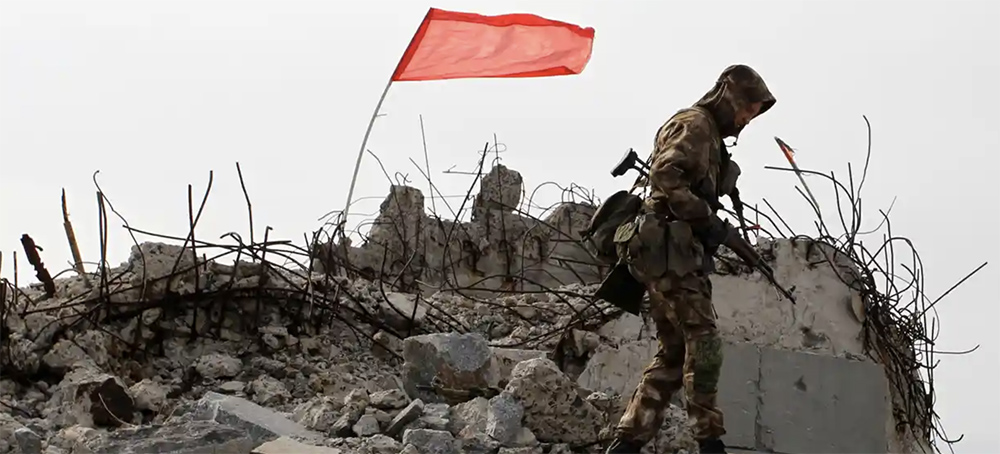 A serviceman of the so-called Donetsk People's Republic walks on a damaged war memorial in Donetsk. (photo: Alexander Ermochenko/Reuters)
A serviceman of the so-called Donetsk People's Republic walks on a damaged war memorial in Donetsk. (photo: Alexander Ermochenko/Reuters)
The Russian president warned the French and German leaders it was ‘dangerous’ for the west to supply further weapons to Ukraine
The call came as Russia’s assault on Ukraine’s Donbas region continues to grind on. During the 80-minute conversation, the two leaders “insisted on an immediate ceasefire and a withdrawal of Russian troops”, according to a readout from Scholz’s office.
Putin is unlikely to heed such calls. Instead, he warned Macron and Scholz that western weapons deliveries to Ukraine were “dangerous” and risked “further destabilisation of the situation”, according to a Kremlin readout.
Hopes for diplomacy have faded in recent weeks as Russia’s invasion reaches the three-month mark. Although Ukraine is taking heavy losses on the battlefield, there is a widespread belief in the country that agreeing to a negotiated settlement would simply give Russia time to regroup ahead of a further attack.
Russia’s army confirmed on Saturday that it now controls the strategic town of Lyman in eastern Ukraine, as Moscow’s assault on the Donbas region continues to grind on.
Lyman, a town of 20,000 people, lies on the road to Sloviansk and Kramatorsk, two of the major Donbas population centres not yet under Russian control.
“The town of Krasny Liman has been entirely liberated from Ukrainian nationalists,” said Russia’s defence ministry in a statement, using the town’s old name.
Ukraine is on the back foot in Donbas, the industrial heartland of the country where Russia-backed forces already seized territory eight years ago and which has now become the centre of Moscow’s Ukraine invasion after the failed attempts to take the major cities of Kyiv and Kharkiv.
In his daily video address on Friday evening, Zelenskiy, said the Russians had “concentrated maximum artillery, maximum reserves in Donbas”, making life very difficult for the Ukrainian army.
“There are missile strikes and aircraft attacks – everything,” Zelenskiy said.
Attention this week has been focused on the city of Sievierodonetsk, which if captured would give Russia control of the whole Luhansk region. The city has been under intense artillery and missile bombardment all week, and the Russians have taken control of the Myr hotel on the edge of town.
On Saturday morning, the Luhansk regional governor, Serhiy Haidai, said the Russians had so far not been able to advance any further than the hotel.
“We have not yet been able to get them out of there, despite their losses. But they are not able to move further either. Their tactics are always the same: a few hours of shelling, and then they try to advance,” he wrote.
Ukraine’s defence minister said foreign military deliveries were helping Ukrainian forces on the frontline, noting three systems that were now in active use against the Russians: M777 and FH70 howitzers as well as the Caesar self-propelled artillery. He also said American M109 howitzer systems had arrived in Ukraine.
“To imagine this back in March would have been impossible. But today it is a reality,” Oleksii Reznikov wrote on Facebook.
At the same time, Ukrainian officials continue to demand more weapons deliveries from the west, saying they risk being outgunned in Donbas and need the deliveries urgently.
There were reports in Washington that the Pentagon may be preparing to send Ukraine advanced long-range rocket systems to help their battle in the Donbas, something that the Ukrainian army and political leaders have been requesting for months.
Meanwhile, Russian forces also carried out a demonstrative test of a new hypersonic missile on Saturday. The Zircon missile, which was first tested in late 2020, was fired from a frigate in the Barents Sea and hit a target in the White Sea in the Arctic that was 625 miles away, said Russia’s defence ministry.
The Zircon can reach speeds of up to 10-times the speed of sound and flies at a low altitude, making it more difficult to intercept.
Also on Saturday, Ukraine’s former president Petro Poroshenko said he was barred from leaving the country, accusing Zelenskiy of breaking a “political ceasefire” in place since the start of the war. Poroshenko was due to travel to a Nato parliamentary assembly meeting in Vilnius.
Zelenskiy defeated Poroshenko in a 2019 election and before the start of the war prosecutors were investigating Poroshenko over his participation in an allegedly corrupt coal export scheme. Many observers suggested the charges were politically motivated.
After the outbreak of the war, Ukrainian authorities suspended the activities of a number of political parties with pro-Russian platforms, but others were allowed to continue, including Poroshenko’s European Solidarity party. Despite the longstanding acrimony between Zelenskiy and Poroshenko, both appeared to put their quarrels aside to focus on the threat from Russia.
“There is a risk that by this decision, the authorities have broken the ‘political ceasefire’ in place during the war … which one of the pillars of national unity in the face of Russian aggression,” said Poroshenko’s office in a statement.
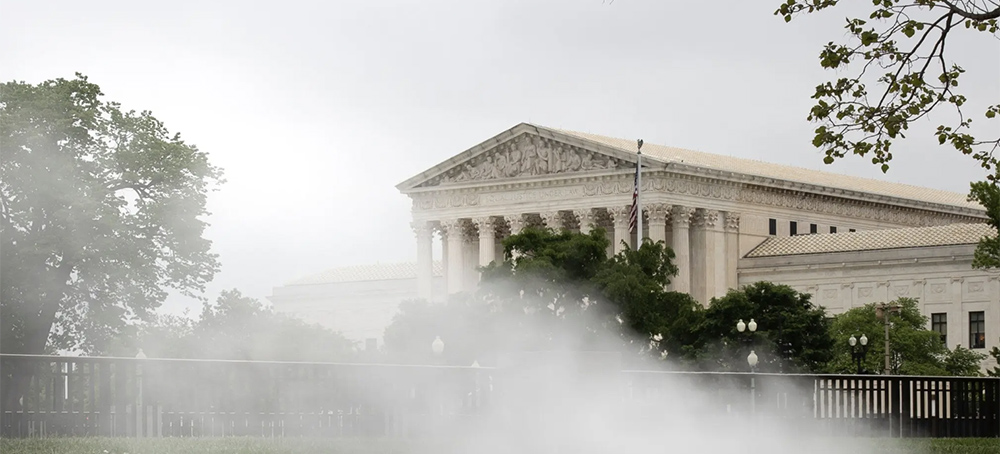 The new case before the Supreme Court is a test of constitutionality laws requiring licenses for carrying guns in public. (photo: Tom Brenner/NYT)
The new case before the Supreme Court is a test of constitutionality laws requiring licenses for carrying guns in public. (photo: Tom Brenner/NYT)
The decision will be the court’s first significant statement on the scope of Second Amendment rights outside the home. In 2008, in ruling that the amendment protects an individual right untied to militia service, the court said only that law-abiding citizens have a constitutional right to keep guns in their homes for self-defense.
The new case, New York State Rifle & Pistol Association v. Bruen, is a test of constitutionality laws requiring licenses for carrying guns in public. California, Hawaii, Maryland, Massachusetts, New Jersey and Rhode Island have laws similar to the one in New York.
At the argument, several justices said the New York law imposes an intolerable burden on the rights guaranteed by the Second Amendment.
“You don’t have to say, when you’re looking for a permit to speak on a street corner or whatever, that, you know, your speech is particularly important,” Chief Justice John G. Roberts said. “So why do you have to show in this case, convince somebody, that you’re entitled to exercise your Second Amendment right?”
But several justices seemed open to allowing the state to exclude guns from crowded public settings or other sensitive places.
Indeed, the 2008 decision, District of Columbia v. Heller, indicated that the court would be prepared to sustain at least some gun control laws, including ones banning guns in schools.
“Nothing in our opinion should be taken to cast doubt on longstanding prohibitions on the possession of firearms by felons and the mentally ill, or laws forbidding the carrying of firearms in sensitive places such as schools and government buildings, or laws imposing conditions and qualifications on the commercial sale of arms,” Justice Antonin Scalia, who died in 2016, wrote for the majority.
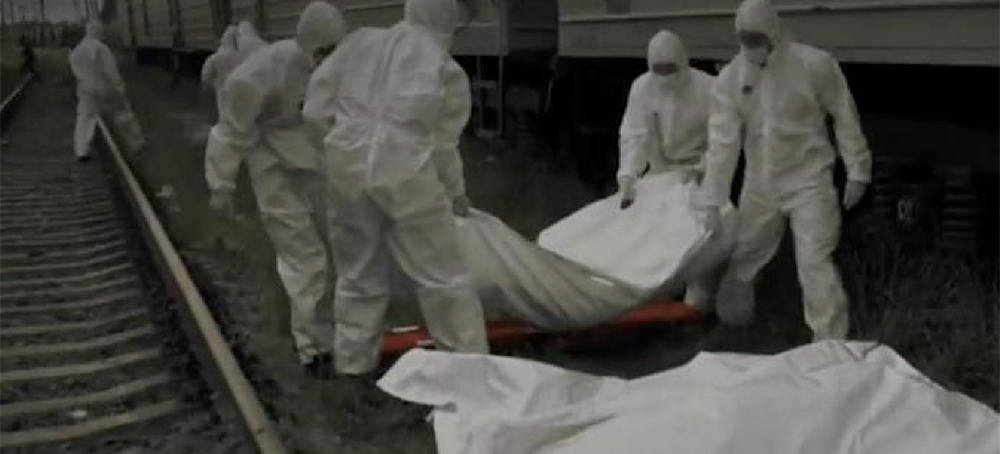 Ukrainian workers load dead bodies of Russian soldiers onto cold-storage train trucks. (photo: Ukrainian rail network/Yahoo! News)
Ukrainian workers load dead bodies of Russian soldiers onto cold-storage train trucks. (photo: Ukrainian rail network/Yahoo! News)
Alexander Kamyshin, the CEO of the state-owned Ukrainian Railways, posted a video on Twitter on Friday which describes how Ukraine preserves the bodies of Russian military fatalities.
"According to humanitarian law, Ukraine preserves bodies to release them to mothers and wives," the video says.
Ukrainian Railways preserves the bodies by storing hundreds of them in refrigerated trucks, according to the video.
The railway network, it says in the video, is prepared to deliver "cargo 200" back to Russia.
"Cargo 200" is a Soviet military code word for the transportation of military fatalities. "Your 'cargo of 200' is waiting on demand," says text at the end of the clip.
Throughout the video, references are made to reports of Russia's unwillingness to repatriate the corpses of their dead soldiers.
"Russian commanders do not seek to return bodies," it is alleged in the video.
"Russia hides real losses from families to avoid panic and to avoid payment of compensations," says text featured in the clip.
Ukraine's deputy prime minister Iryna Vereshchuk told The Guardian that Russia was refusing to take in body bags because it wanted to deny the scale of its military losses.
To disguise the true number of casualties, Russia has secretly transported its dead and wounded soldiers to Belarus, reports say, per Insider.
Last month, Insider reported that Ukraine claimed it was storing more than 7,000 unclaimed Russian corpses in its morgues.
Ukrainian President Volodymyr Zelenskyy criticized Russia's refusal to repatriate its dead soldiers, per The Guardian, having accused the Kremlin, in March, of affording less respect to those killed than is usually given to dead pets.
 Alexandria Ocasio-Cortez in Washington, DC, on July 15, 2019. (photo: Brendan Smialowski/AFP/Getty Images)
Alexandria Ocasio-Cortez in Washington, DC, on July 15, 2019. (photo: Brendan Smialowski/AFP/Getty Images)
In a first, Rep. Alexandria Ocasio-Cortez has endorsed the entire 13-member “For the Many” New York City Democratic Socialists of America slate of candidates for New York state senate and assembly.
Endorsements by AOC, whose approval can transform a campaign’s prospects, are often treated as mysterious koans — puzzled over by political insiders who ponder why she chose one candidate and overlooked others, why she used to make so few endorsements, or why she now makes so many. Today’s announcement is unburdened by any such ambiguities: AOC’s endorsement reflected solidarity with NYC-DSA’s platform and movement, against the forces of capitalism and reaction both inside and outside the Democratic Party.
Though each candidate was individually vetted by DSA through the group’s formal electoral mechanisms, the congresswoman’s announcement was not couched as being about any one of them in particular; AOC’s intention appears to be to boost New York’s socialist movement as a whole.
This year, NYC-DSA’s “For the Many” slate includes incumbent assemblymembers Phara Souffrant Forrest (AD-57), Emily Gallagher (AD-50), Zohran Kwame Mamdani (AD-36), and Marcela Mitaynes (AD-51), and state senators Jabari Brisport (SD-25) and Julia Salazar (SD-18). It also includes seven insurgent candidates: social worker Illapa Sairitupac (AD-65), tech worker Kristen Gonzalez (SD-59), cab driver David Alexis (SD-21), community gardener and district leader Keron Alleyne (AD-60), district leader Samy Nemir Olivares (AD-54), former Peekskill city councillor Vanessa Agudelo (AD-95), and Hudson Valley climate activist Sarahana Shrestha (AD-103).
This is the biggest slate in NYC-DSA’s history. The 2018 midterm elections saw both AOC and state senator Julia Salazar win their seats. In 2020, a larger slate ran — Mamdani, Mitaynes, Forrest, and Brisport — and all four won their elections. (Gallagher wasn’t endorsed by NYC-DSA at the time, but she ran as a socialist, won, and has since worked closely with the DSA slate and joined it as an endorsee this year.)
Last year, NYC-DSA competed in city council races, with two wins and four losses. The latter development was seized on by opponents to construct a narrative claiming that popular sentiment is turning against the organization. Such developments can drain morale within a political organization. This year, it’s likely that with its map expanded to thirteen races, NYC-DSA will face some losses — but the wins will be significant, and all the campaigns will help NYC-DSA grow in new communities.
State senate candidate Kristen Gonzalez, who lives in Long Island City and was active in successful campaigns there against Amazon and against the toxic natural gas NRG Energy plant, was overjoyed by the AOC endorsement when asked for comment on Wednesday. Her campaign is similar to AOC’s 2018 insurgent congressional bid: Gonzalez, who was a volunteer field lead for AOC’s reelection campaign, is running against a thoroughgoing machine candidate, Elizabeth Crowley — a cousin of Joe Crowley, the centrist who AOC unseated that year.
Gonzalez is running in a four-day-old district that includes Astoria, overlapping significantly with AOC’s district. Working on AOC’s campaign brought Gonzalez into socialist politics, she says, adding, “I’m excited to continue the movement she started, for the Green New Deal, against corporate machine politics, a grassroots movement centered on the working class.” She says her campaign is about showing that “our district is not for sale.”
This year’s thirteen-person slate is ambitious; some have argued that the group may be biting off more than it can chew in terms of street-level organization. But AOC’s endorsement is likely to bring significant resources to the campaigns, including grassroots dollars, volunteers, and media attention.
It will also no doubt sway the many New York voters who already know and like AOC in the slate’s favor. AOC is popular in these districts; her name often functions as shorthand for democratic socialist values and politics, for priorities like single-payer health care, a Green New Deal, a right to housing, publicly funded energy, and fully funded public schools. If you canvass door-to-door for socialist candidates in the city (as, full disclosure, I have), this becomes obvious.
“Is she AOC’s friend?” one registered voter once asked me. “In that case, yes, of course.”
That appeal extends beyond city limits. Campaigning in the Hudson Valley, Sarahana Shrestha told Jacobin, “People often tell me, if AOC can win, you can do it here.”
Ocasio-Cortez has never tied her political brand to the familiar “you-go-girl” type of individualism; her story is not one of political bootstrapping. “This is not about one candidate,” says Shrestha. “One candidate is not going to be able to do anything alone. We have developed knowledge as part of a movement.” The power of such campaigns is their relationship to the climate and labor movements, to organizing for housing, racial justice, and socialism.
“When people say, ‘If AOC can do it,’ they are talking about the movement — they are talking about the bigger picture.”
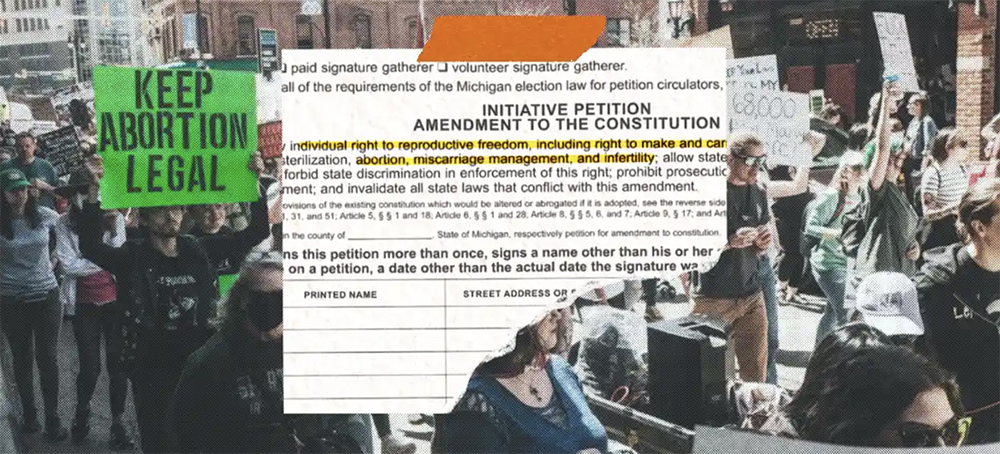 Volunteers need to collect 425,059 signatures to get the measure on the ballot. (photo: The Guardian/Getty Images)
Volunteers need to collect 425,059 signatures to get the measure on the ballot. (photo: The Guardian/Getty Images)
The year before Roe, Michigan voters defeated a referendum to legalize abortion. Now activists are compelled to try again
But here she is, in the middle of an abortion rights rally on the University of Michigan’s campus in Ann Arbor, collecting signatures to support a constitutional amendment to keep abortion legal in one of America’s swingy “purple” states.
“The Republican party in Michigan has just been hijacked by the extreme right. Somehow, Christian values are things they want,” said Morris.
She feels moderates like herself are “endangered”, and that many of her Republican friends have grown more extreme, and now even oppose birth control.
A mother of three adult children, Morris said she has donated to Planned Parenthood every year since college, when the organization helped her get a prescription for the pill. Now, she is part of a high-stakes drive to keep abortion legal in Michigan by putting the question to voters, when the right has never appeared more threatened.
A leaked supreme court draft opinion showed the court is on the precipice of reversing Roe v Wade, a landmark ruling that in 1973 invalidated dozens of state abortion bans, including in Michigan. Without the protections provided by Roe, a criminal abortion ban dating back to 1846 would reanimate, making abortion punishable as manslaughter in a state that 2.2 million women of reproductive age call home.
“If you don’t want to do any of these options, that’s obviously your prerogative. But I don’t feel I should tell someone else what to do,” said Morris.
Michigan would be one of 26 states that would be certain or likely to ban abortion if Roe were reversed. It’s also the only one of those states where a coalition of groups has undertaken a ballot initiative to try to establish the right, and indeed expand it, in the state constitution.
The coalition, which includes the American Civil Liberties Union, Planned Parenthood and the Black women-led Michigan Voices, want voters to support a constitutional amendment to protect an expansion of reproductive rights, including but not limited to abortion.
“It’s not just about reproductive freedom in the sense most people understand it, around abortion access,” said Chris Melody Fields Figueredo, executive director of the Ballot Initiative Strategy Center, a non-profit that works on progressive state referendums.
“It’s also about how you want to parent, and your pregnancy, including abortion, prenatal care, childbirth. That, to me, is really remarkable”.
Short of flipping the Republican-controlled Michigan house and senate, which would be a mighty feat as districts were gerrymandered to favor Republicans, the ballot initiative is the most direct way to protect abortion access. Right now, the focus of 25,000 volunteers is clear: to collect 425,059 signatures, thereby getting the measure on the ballot.
“A lot of people want to sign this one,” said Yvonne Wyborny, 65, a retired accountant wearing a pink polo shirt and sensible black sneakers and thrusting her clipboard at people in Detroit’s Eastern Market. It’s Flower Day, an event that draws tens of thousands of people from all over the state. “Especially young women, they tend to grab it out of my hands.”
Whether this ballot initiative will become a national model remains an open question. Only 26 states have some form of direct democracy, and just 18 have a provision that allows citizens to initiate a constitutional amendment, according to Ballotpedia.
However, ballot initiatives often become the forerunners of broad political and legal change, as they did before gay marriage, said Fields Figueredo. The fact that the petition is being signed by a broad, and surprising, assortment of Michigan residents is something the organizers hope may reflect a similarly broad public shift: even people uncomfortable with the procedure don’t want to dictate medical decisions to fellow Americans.
“My moral compass leads me to pro-life,” said Jacqueline Washington, 31, of Warren, who signed the petition in Eastern Market. “But I have no reason to decide for other people.”
More than two-thirds of Americans support access to abortion under most or all circumstances. Criminal bans are a generally unpopular policy to which Republicans have tied themselves by zealously advocating against abortion. Other failed referendums to criminalize abortion, from South Dakota to Colorado to Mississippi, reveal possible electoral peril for Republicans.
Remarkably, this is the second time activists in Michigan have attempted to make abortion legal through a ballot initiative. The first came in 1972, the year before Roe v Wade.
At the time, Renee Chelian – now founder and CEO of Northland Family Planning Centers, three independent abortion clinics outside Detroit – was an abortion provider in a state where it was still illegal. On the weekends she would travel to Buffalo, New York, to perform legal abortions with a Detroit OBGYN. They met at the airport before dawn on Fridays, and returned home late on Sundays after every patient had been served.
“Patients flew, they hitchhiked, they took a bus – they did whatever they had to do to get there,” said Chelian. “And they came from, what I can recall, a six-state area and Canada.”
In 1972, it appeared as if a reprieve was imminent. A referendum question called “Proposition B” was on the fall ballot, asking voters whether to legalize abortion up to 20 weeks gestation. The question polled so well that a new abortion clinic was founded in Detroit, anticipating new patients.
“I was young, and I was working seven days a week, but I knew there was a referendum – I knew the polls looked like we were going to win,” said Chelian.
However, a vocal anti-abortion campaign funded by the Catholic church ran wall-to-wall commercials, commented in newspaper articles and sent Catholic high school students out to canvass against the measure – and it failed, terribly. Voters rejected the measure 61% to 39%, and abortion remained illegal in Michigan.
“We lost, and I went right back to work in Buffalo,” said Chelian. “There wasn’t even time to be disappointed.”
Roe followed just a few months later in January 1973, and seemingly made the history of the first referendum moot. But Chelian, who had an illegal abortion herself at 15, is now worried history may repeat. A supreme court decision is expected in June, meaning abortion could be illegal in Michigan for several months before voters get their chance in November to vote on the ballot initiative.
“I don’t want to end my career back where I started it, providing abortions in another state,” Chelian said.
“My daughters are second-generation providers, and I want them and the women who have worked for me for a long time to be able to run these clinics and take good care of pregnant people long after I’m gone.”
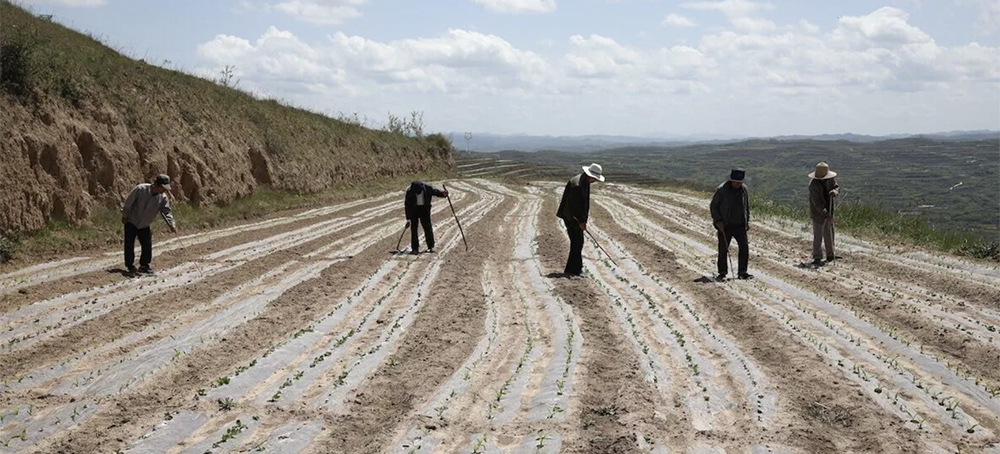 Farmers work in fields of reclaimed farmland in the Qinzhou District of Tianshui, northwest China's Gansu Province on May 11, 2022. (photo: Wang Zixuan/Xinhua/Getty Images)
Farmers work in fields of reclaimed farmland in the Qinzhou District of Tianshui, northwest China's Gansu Province on May 11, 2022. (photo: Wang Zixuan/Xinhua/Getty Images)
In a new study, researchers found that croplands are unlikely to be allowed to rejuvenate on a large enough scale to be impactful unless lawmakers intervene, since much of the land will end up being recultivated, The Hill reported.
“As people move from rural areas into cities, there is a chance for wildlife and the climate to gain ground — literally — as abandoned farms and pastures revert back to forests and grasslands,” said David Wilcove, professor of ecology and evolutionary biology and public affairs at the High Meadows Environmental Institute, one of the co-authors of the study, as a press release from the Princeton School of Public and International Affairs reported. “Our work shows that this is not happening because the ‘abandoned’ lands are being rapidly recultivated.”
In the study’s findings, “Rural Land Abandonment Is Too Ephemeral to Provide Major Benefits for Biodiversity and Climate,” researchers call for policy interventions to ensure that habitat restoration happens on former farmland so that the planet can reap the benefits of nature’s natural balancing process. The paper was published Wednesday in the journal Science Advances.
“Unless countries and policymakers develop better regulations and incentives to allow these lands to recover, this chance to restore ecosystems will not be fully realized,” said Ph.D. candidate at Princeton University’s School of Public and International Affairs Christopher Crawford, who was lead author of the study, as The Hill reported. “It will remain a missed opportunity to fight climate change and biodiversity loss.”
The possibility for environmental benefits from the abandonment of former farmland is dependent not only on how much is abandoned, but how long it remains uncultivated, explained the Princeton press release.
The researchers found that, after keeping track of the abandonment and recultivation of cropland at 11 sites over four continents by using yearly land-cover maps put together using satellite imagery from 1987 to 2017, much of the land ended up being recultivated within 14.22 years, a period of time not long enough to allow the former cropland to become a haven for a significant amount of wildlife or for it to capture a considerable amount of carbon.
Locations included those abandoned for various reasons — including socioeconomic and environmental factors, as well as conflict and war — in Brazil, Bosnia and Herzegovina, Iraq, China, Kazakhstan, Belarus, the United States and Russia.
The researchers predicted that, at most of the studied sites, about 50 percent of the abandoned farmland would end up being recultivated in 30 years or less.
“Without incentives for restoration, cropland abandonment rarely lasts long enough to yield benefits for biodiversity or carbon sequestration. For abandoned croplands to reach levels of carbon stocks and biodiversity comparable to more intact natural ecosystems, they typically need at least 50 years of regeneration,” said Crawford, according to the press release.
When the abandoned farmland was cultivated, it led to a 35 percent reduction in carbon capture by 2017, the study showed.
The land that had the greatest recultivation levels was in the former Soviet Union, while land remained uncultivated a little while longer in the Shaanxi and Shanxi provinces of China, the press release said, possibly due to the “Grain for Green Program” there, which gives financial incentives for cropland reforestation.
The study’s authors suggested that fields of former cropland, especially those that were not needed for food production, be transformed into safe havens for wildlife. This could be facilitated by offering financial incentives to landowners to allow the reclamation of their croplands. Supporting long-term sustainable cultivation was also suggested as a possibility for some sites.
“Unless policymakers take steps to reduce recultivation or provide incentives for regeneration, abandonment will remain a missed opportunity to reduce biodiversity loss and climate change,” the paper said.
Special Coverage: Ukraine, A Historic Resistance
READ MORE
Follow us on facebook and twitter!
PO Box 2043 / Citrus Heights, CA 95611


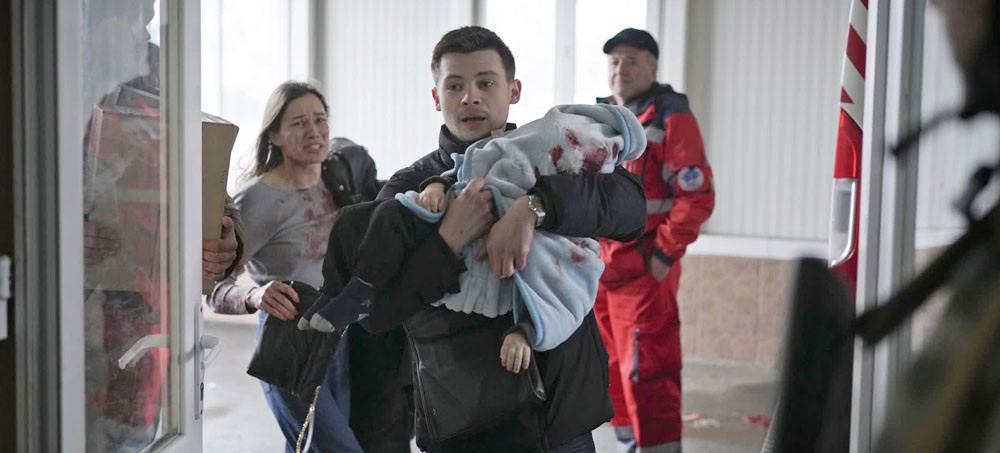

No comments:
Post a Comment
Note: Only a member of this blog may post a comment.